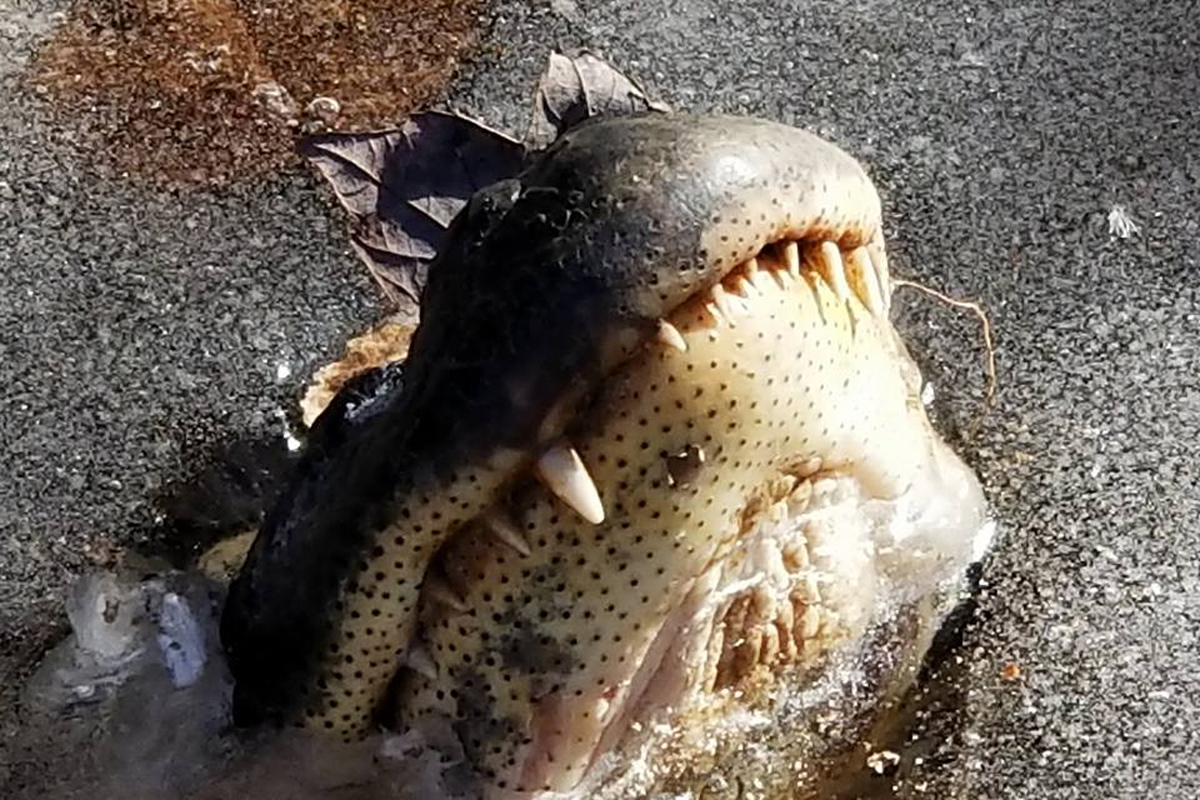When you purchase through data link on our site , we may earn an affiliate commissioning . Here ’s how it work .
In a creepy video fit for a scene in a repulsion pic , nightmarish " hemipteron " that almost depend like lobsters emerge on the seafloor to attack the corpse of an gator , using their mandibles to break through the scaly cutis and feed on the juicy insides .
The carcase is lying a mile and a quarter ( 2 kilometers ) down on the bottom of the Gulf of Mexico , and the football - size isopods — they are related to roly polies or pill bug — are having a force field sidereal day . These isopods may go for months or years between meals , harmonise to investigator Craig McClain and Clifton Nunnally , both of the Louisiana Universities Marine Consortium . [ Beastly feast : Amazing picture of Animals and Their Prey ]

Giant isopods feed on an alligator carcass at the bottom of the Gulf of Mexico.
" They have this awe-inspiring power to gorge themselves , hive away that vigour and then essentially not have another repast for calendar month to years afterwards , " McClain saidin the telecasting .
Gator fall
The gator fare to its watery solemn good manners of McClain , Nunnally and their colleagues , who are interested in analyse how " foodfalls " impact marine ecosystem . Foodfalls can be anything from agiant whale carcassto logs of Grant Wood ( sure clams and specialized bacteria can digest Sir Henry Joseph Wood ) wash into the ocean via river . Alligator carcase may be a common type of foodfall , McClain said , but no one has ever studied them before .
The researchers weighted the carcasses of alligators donated by the body politic of Louisiana , which humanely euthanized the animals as part of its alligator direction program . They then watched on - camera what creature come to feast .
" The inscrutable sea is a solid food desert , spit with nutrient oasis , " Nunnally said in the video . The gator carcass is a peculiarly interesting oasis , he added , because alligator are the secretive thing alive today to ancient devil dog reptile likeichthyosaurs . Some of the creatures that feed on modern alligator could be the same that ate ichthyosaurs million of years ago , he said .

Easy work
Isopods are crustacean with ascendent dating back 300 million years . The giant isopods feeding on the gator seemed well - adapt to their role as scavengers . In less than 24 hours , several were immersed halfway into the alligators ' belly , chowing down from the interior .
" I thought the alligator pelt would be something that would be hard to get through , but obviously their pinching and crushing mandibular bone make well-situated body of work of the fell , " Nunnally say .
One isopod in the video starts to swim away , only to take a nosedive directly into the sandy seafloor . The animal might be so gorge with its rare repast that it has trouble move , the researchers said . [ In Photos : Spooky Deep - Sea Creatures ]

" We ’ve seen that in other scavengers , where they ’ll eat so much that they essentially become fast or stupefied in their actions , and so that may just be the fact that they ’ve gourmandize themselves so much in an effort to get this rare resourcefulness that they ’ve really , you make love , inhibit themselves from proper locomotion , " Nunnally suppose in the video .
The project also shoot for to understand how carbon from land - based life-time - forms reaches the abstruse sea . The research worker arrange the gator carcass down virtually two calendar month ago and design to return to the site later this calendar week . They gestate that the carcass will be half gone , and that other scavengers will have move in to get physique that the isopods could n’t reach . It ’s even potential thatbone - eat worms call osedaxmight be found in the gator ’s skeleton .
" I remember it will be interesting to see what newfangled magpie show up , " Nunnally said .

Between April 10 and April 24 , the researcher will be pinch about their discoveries at@LUMCONscience,@DrCraigMcand@seagrifousing the hashtag # woodfall .
primitively published onLive skill .















